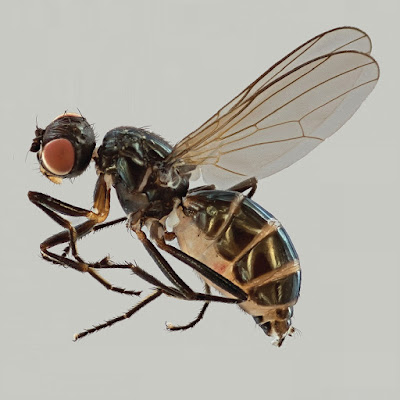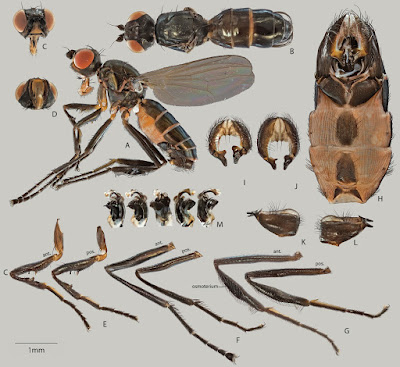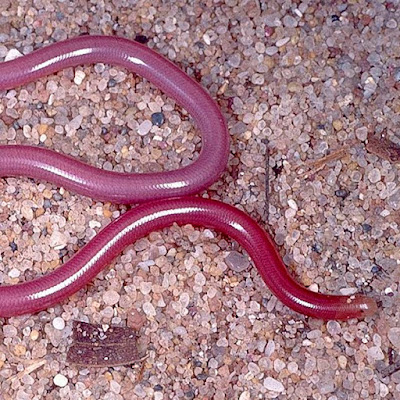[Most Recent Entries] [Calendar View]
Wednesday, September 20th, 2017
| Time | Event | ||||
| 10:08a | [Entomology • 2017] Themira lohmanus • Hidden in the Urban Parks of New York City: A New Species of Themira (Sepsidae, Diptera) Described Based on Morphology, DNA Sequences, Mating Behavior, and Reproductive Isolation New species from well-studied taxa such as Sepsidae (Diptera) are rarely described from localities that have been extensively explored and one may think that New York City belongs to this category. Yet, a new species of Themira (Diptera: Sepsidae) was recently discovered which is currently only known to reside in two of New York City’s largest urban parks. Finding a new species of Themira in these parks was all the more surprising because the genus was revised in 1998 and is not particularly species-rich (13 species). Its status is confirmed as a new species based on morphology, DNA sequences, and reproductive isolation tests with a closely related species, and is described as Themira lohmanus Ang, sp. n. The species breeds on waterfowl dung and it is hypothesized that this makes the species rare in natural environments. However, it thrives in urban parks where the public feeds ducks and geese. The mating behavior of Themira lohmanus was recorded and is similar to the behavior of its closest relative T. biloba. Keywords: cryptic species, Sepsidae, species description Themira lohmanus Ang, sp. n. Diagnosis: Themira lohmanus is a relatively large, robust-looking sepsid species that resembles T. biloba. However, adult T. lohmanus males can be readily differentiated from the latter by their uniquely shaped, asymmetrical surstyli, which is symmetrical in T. biloba (Fig. 1A, see Morphological analysis section). While females of these two species do not have distinct structural differences, they can potentially be distinguished based on the color of the sclerous cuticle: in T. biloba, it tends to be glossy black while T. lohmanus tends to have a cupreous tinge. However, these characters may not be easily differentiated in faded specimens. Etymology: The new species is named after David J. Lohman, for his generous contributions of specimens to sepsid taxonomy. Distribution: Nearctic. Thus far only found in New York City (Central Park and Prospect Park); likely to be found in more localities in the future, especially where waterfowl congregate. Yuchen Ang, Rudolf Meier, Kathy Feng-Yi Su and Gowri Rajaratnam. 2017. Hidden in the Urban Parks of New York City: Themira lohmanus, A New Species of Sepsidae Described Based on Morphology, DNA Sequences, Mating Behavior, and Reproductive Isolation (Sepsidae, Diptera). ZooKeys. 698; 95-111. DOI: 10.3897/zookeys.698.13411 | ||||
| 10:41a | [Herpetology • 2017] Worms in the Sand: Systematic Revision of the Australian Blindsnake Anilios leptosoma (Robb, 1972) Species Complex (Squamata: Scolecophidia: Typhlopidae) from the Geraldton Sandplain, with Description of Two New Species
Abstract The blindsnake genus Anilios (formerly Ramphotyphlops) is the largest and most diverse genus of snakes in Australia with 45 currently recognized species. Recent molecular genetic studies of the genus have identified high levels of cryptic diversity within many taxa, suggesting true species diversity is greatly underestimated. Anilios leptosoma is a slender blindsnake endemic to the mid-west of Western Australia. Although morphological variation has been identified within the species in the past, the systematics and true diversity remained unstudied. Here we use recent molecular data to guide a reappraisal of morphology in order to provide a taxonomic revision of the A. leptosoma species complex. We redescribe A. leptosoma and describe two new species that occur to the south of most of true A. leptosoma’s distribution: A. systenos sp. nov. and A. obtusifrons sp. nov. Anilios systenos sp. nov. is known from the Geraldton region with the furthest record only 100 km to the north-east, a very small range for a species of snake. Anilios obtusifrons sp. nov. has an even smaller distribution, as it is only known from a small coastal area south of Kalbarri and may represent a range-restricted taxa. All species are genetically divergent from each other and can be distinguished by consistent morphological characteristics, including the shape of the snout, the termination point of the rostral cleft and number of mid-body scale rows and ventral scales. Keywords: Reptilia, taxonomy, morphology, mtDNA, nDNA, cryptic species, cryptic diversity, Ramphotyphlops leptosoma, Anilios systenos sp. nov., Anilios obtusifrons sp. nov., Western Australia Taxonomy Typhlopidae Merrem, 1820 Anilios Gray, 1845 Type species. Anilios australis Gray, 1845, by subsequent designation by Stejneger (1904) [p. 683]. Etymology. Masculine noun formed from the Greek words an—not and helios—sun (without sun) in reference to the fossorial or below ground habits of these species (Savage & Boundy 2012; Hedges et al. 2014). Anilios leptosoma (Robb, 1972) Murchison Blindsnakes Etymology. Derived from the Greek words leptos meaning fine or thin and soma meaning body in reference to the thin thread-like appearance of the species. The amendment to the specific epithet to A. ‘leptosomus’ by McDiarmid et al. (1999) and subsequently accepted by other authors (Hedges et al. 2014; Pyron & Wallach 2014; Wallach et al. 2014) is not warranted (Shea 2015). As Robb (1972) did not state explicitly the use of the word ‘soma’ as a noun or adjective, it is to be treated as a noun and does not change from A. leptosoma with the resurrection of Anilios by Hedges et al. (2014). Anilios systenos sp. nov. Ellis & Doughty Sharp-snouted Blindsnakes Etymology. Derived from the Greek word systenos, meaning ‘tapering to a point’ in reference to the tapering appearance of the head and snout to a rounded point when viewed dorsally.
Anilios obtusifrons sp. nov. Ellis & Doughty Blunt-snouted Blindsnakes Etymology. From a combination of the Latin words obtusus meaning ‘blunt or dull’ and frons meaning ‘front’ in reference to the rounded or blunt appearance of the snout in dorsal and lateral view. Ryan J. Ellis, Paul Doughty, Stephen C. Donnella Worms in the Sand: Systematic Revision of the Australian Blindsnake Anilios leptosoma (Robb, 1972) Species Complex (Squamata: Scolecophidia: Typhlopidae) from the Geraldton Sandplain, with Description of Two New Species. Zootaxa. 4323(1); 1–24. DOI: 10.11646/zootaxa.4323.1.1 |
| << Previous Day |
2017/09/20 [Calendar] |
Next Day >> |






